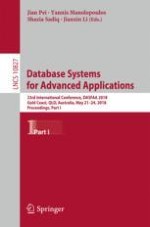2018 | OriginalPaper | Buchkapitel
Functional-Oriented Relationship Strength Estimation: From Online Events to Offline Interactions
verfasst von : Chang Liao, Yun Xiong, Xiangnan Kong, Yangyong Zhu, Shimin Zhao, Shanshan Li
Erschienen in: Database Systems for Advanced Applications
Aktivieren Sie unsere intelligente Suche, um passende Fachinhalte oder Patente zu finden.
Wählen Sie Textabschnitte aus um mit Künstlicher Intelligenz passenden Patente zu finden. powered by
Markieren Sie Textabschnitte, um KI-gestützt weitere passende Inhalte zu finden. powered by
